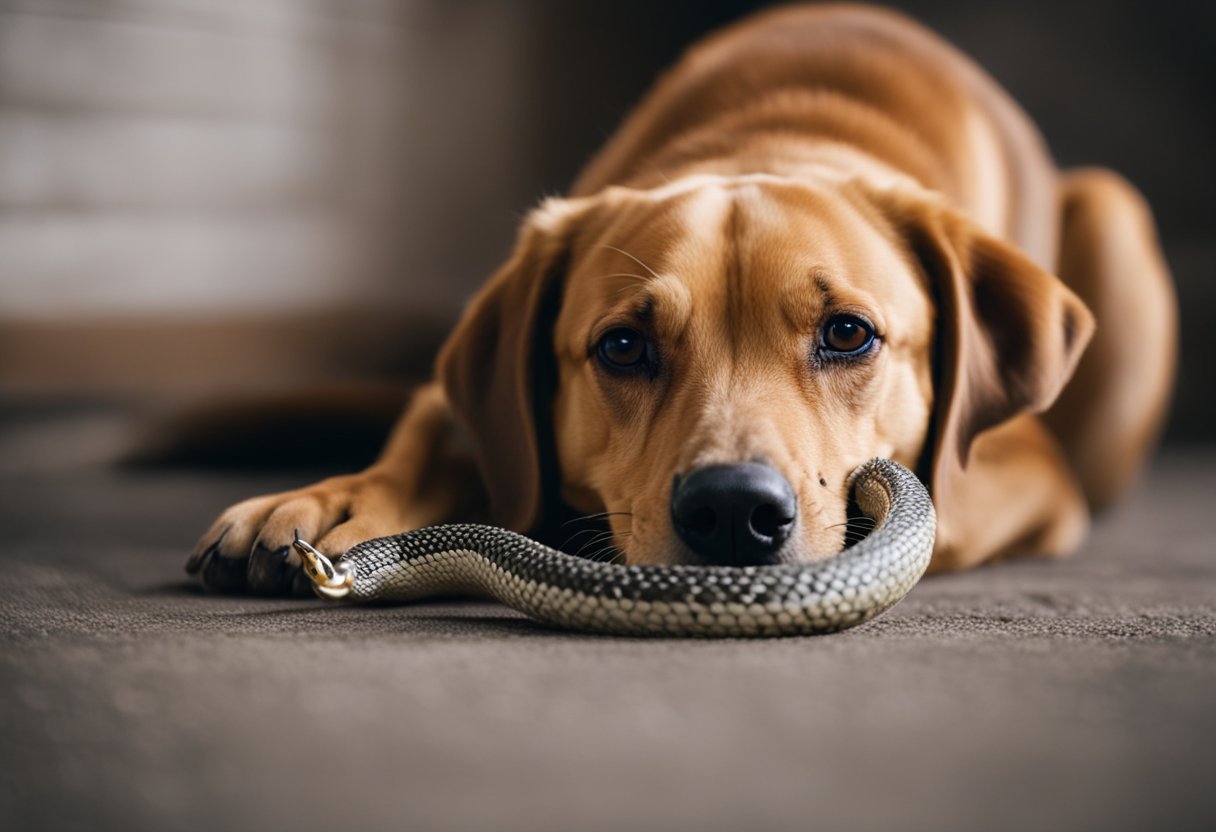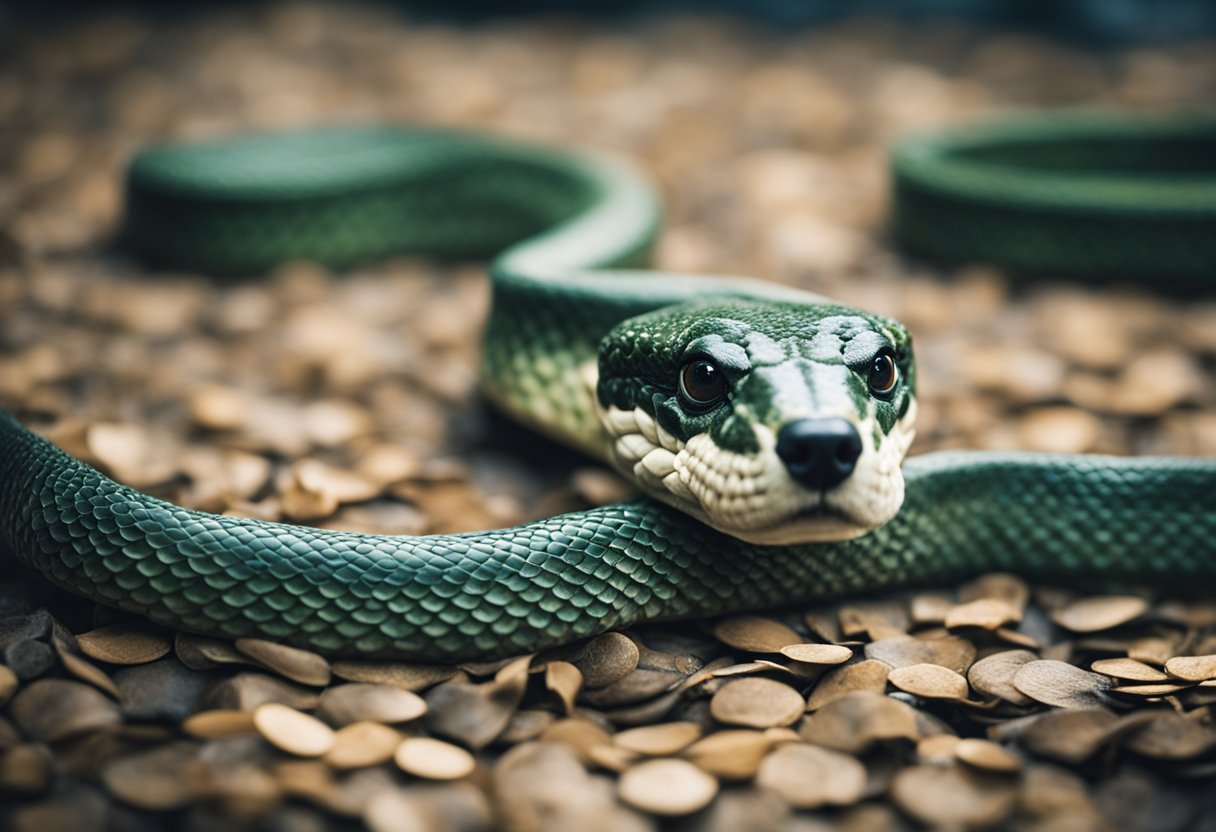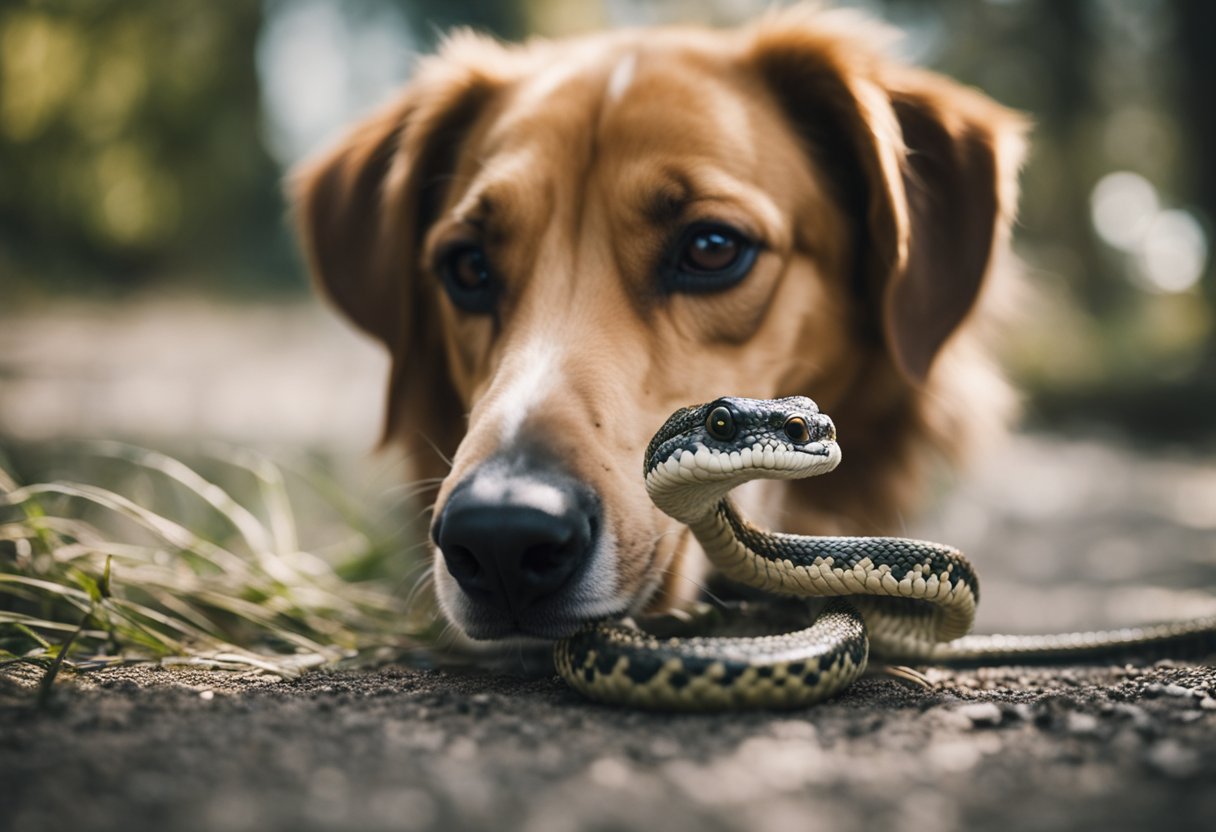After conducting research on the topic, I can confidently say that dogs should not eat snake skin. While some may think that it is harmless or even beneficial for dogs to consume snake skin, it can actually pose a serious health risk.

Snake skin contains a protein called keratin, which is difficult for dogs to digest. Consuming large amounts of keratin can lead to gastrointestinal issues such as vomiting, diarrhea, and constipation. In addition, snake skin may also contain traces of venom or bacteria that can be harmful to dogs if ingested. Therefore, it is important to keep your dog away from snake skin and seek veterinary attention if you suspect that they have consumed any.
Can Dogs Eat Snake Skin
https://www.youtube.com/watch?v=qiyl_WGIIQI&embed=true
As a dog owner, you may have wondered whether it is safe for your furry friend to consume snake skin. While dogs are known to be curious creatures, it is important to be aware of the potential risks associated with their dietary choices.
Firstly, it is important to note that not all snakes are venomous. However, even non-venomous snakes may carry harmful bacteria on their skin. Therefore, it is generally not recommended to allow your dog to consume snake skin.
If your dog has ingested snake skin, it is important to monitor them closely for any signs of discomfort or illness. Symptoms of snakebite in dogs can include swelling, pain, and difficulty breathing. If you suspect that your dog has been bitten by a snake, it is important to seek veterinary care immediately.
In addition to the potential health risks, consuming snake skin may also pose a choking hazard to your dog. The tough, scaly texture of snake skin can become lodged in your dog’s throat or digestive tract, leading to serious health complications.
Overall, while it may be tempting to allow your dog to explore and taste new things, it is best to err on the side of caution when it comes to consuming snake skin. If you suspect that your dog has ingested snake skin or has been bitten by a snake, seek veterinary care immediately.
In conclusion, it is not recommended to feed snake skin to dogs due to the potential health risks and choking hazards. As a responsible dog owner, it is important to be aware of the potential dangers associated with your dog’s dietary choices and to seek veterinary care if you suspect that your dog has ingested something harmful.
Potential Dangers of Consuming Snake Skin

As a dog owner, it is important to be aware of the potential dangers associated with allowing your dog to consume snake skin. While snake skin is not toxic or poisonous, it can still pose a number of risks to your dog’s health.
One of the primary concerns with consuming snake skin is the risk of intestinal blockages. The keratin in snake skin is not easily digestible and can cause obstructions in your dog’s digestive system. This can lead to symptoms such as vomiting, lethargy, loss of appetite, and abdominal pain. In severe cases, intestinal blockages can be life-threatening and require immediate medical attention.
In addition to the risk of blockages, consuming snake skin can also lead to other health issues. Some snakes, such as rattlesnakes and copperheads, are venomous and their skin may contain residual venom or toxins. While the risk of poisoning from consuming snake skin is low, it is still a possibility and can lead to symptoms such as weakness, pain, swelling, and even paralysis.
Another concern is the potential for bacterial infections. Snake skin can harbor bacteria such as salmonella, which can cause upset stomach and other gastrointestinal issues. Additionally, some species of snake carry the parasite Spirometra, which can infect your dog’s tissues and lead to serious health problems.
If you suspect that your dog has consumed snake skin, it is important to monitor them closely for any signs of illness or discomfort. If your dog shows any symptoms such as vomiting, diarrhea, constipation, or abdominal pain, it is important to seek veterinary care immediately. In some cases, hospitalization and antibiotics may be necessary to treat the symptoms and prevent further complications.
In conclusion, while snake skin may seem like a harmless source of protein for your dog, it is important to be aware of the potential risks and take steps to prevent your dog from consuming it. If you live in an area with venomous snakes or if your dog has a history of eating non-food items, it is important to take extra precautions to keep them safe.
Symptoms to Look Out For

As a dog owner, it’s important to know that not all snakes are harmless to your furry friend. If your dog has ingested snake skin, it’s crucial to monitor them for any symptoms of snakebite. Here are some symptoms to look out for:
- Vomiting and Diarrhea: These are common symptoms of snakebite in dogs. If your dog experiences these symptoms after ingesting snake skin, it’s best to take them to the vet immediately.
- Loss of Appetite: If your dog suddenly loses interest in food, it could be a sign of snakebite. Keep an eye on their eating habits and take them to the vet if they refuse to eat for more than 24 hours.
- Lethargy and Weakness: If your dog seems more tired than usual or has trouble standing or walking, it could be a sign of snakebite. This is because snake venom can affect the nervous system and cause weakness or paralysis.
- Pain and Swelling: If you notice any swelling or pain around the area where your dog ingested the snake skin, it could be a sign of snakebite. This is especially true if the swelling is accompanied by redness or bruising.
- Abdominal Pain and Constipation: If your dog is experiencing abdominal pain or constipation after ingesting snake skin, it could be a sign of a blockage in their digestive system. This is a serious condition that requires immediate veterinary attention.
If you notice any of these symptoms in your dog after they have ingested snake skin, it’s important to take them to the vet right away. Snakebite can be a serious condition that requires prompt treatment, so don’t delay seeking medical attention for your furry friend.
Veterinary Care for Snake Skin Ingestion
If your dog has ingested snake skin, it is important to seek veterinary care immediately. Even though snake skin is not toxic, it can still cause harm to your dog’s digestive system. The severity of the situation depends on the size of the snake and the amount of skin ingested.
When you bring your dog to the veterinarian, they will perform a physical examination to assess the dog’s condition. They may also perform diagnostic tests, such as X-rays or ultrasounds, to determine if there is any internal damage caused by the ingestion of snake skin.
In some cases, your dog may need to be hospitalized for observation and treatment. The veterinarian may administer antibiotics or other medications to prevent infection and promote healing. They may also provide first aid treatments to help your dog feel more comfortable and reduce any pain or inflammation.
It is important to follow the veterinarian’s instructions carefully and monitor your dog closely during the recovery period. Make sure your dog gets plenty of rest and does not engage in any strenuous activity that could worsen the condition.
In conclusion, if your dog has ingested snake skin, seek veterinary attention immediately. The veterinarian will assess the situation and provide the necessary care to ensure your dog’s well-being.
Safe Alternatives to Snake Skin
As a responsible pet owner, it’s important to ensure that your dog is not exposed to any harmful substances or objects. While snake skin may seem like a fun chew toy for your furry friend, it can actually pose a serious health risk. Not only can it cause choking or intestinal blockages, but it may also be contaminated with harmful bacteria or parasites.
Fortunately, there are plenty of safe chew toys that your dog can enjoy without any risk to their health. Here are some of the best alternatives to snake skin:
Rubber Chew Toys
Rubber chew toys are a popular choice for many dog owners, and for good reason. They are durable, easy to clean, and come in a variety of shapes and sizes. Plus, they are safe for your dog to chew on and won’t cause any harm to their digestive system.
Nylon Chew Toys
Nylon chew toys are another great option for dogs who love to chew. They are tough and long-lasting, making them perfect for aggressive chewers. Plus, they come in a range of textures and flavors, so your dog is sure to find one that they love.
Rope Toys
Rope toys are a fun and interactive way for your dog to play and chew. They are made from durable materials and come in a variety of shapes and sizes. Plus, they can help to clean your dog’s teeth and promote healthy chewing habits.
Benefits of Safe Chew Toys
Not only are safe chew toys a great way to keep your dog entertained, but they also offer a range of benefits. Chewing on a toy can help to relieve stress and anxiety, promote healthy teeth and gums, and prevent destructive chewing behavior.
In conclusion, while snake skin may seem like a fun chew toy for your dog, it’s important to choose safe alternatives that won’t pose any risk to their health. Rubber chew toys, nylon chew toys, and rope toys are all great options that your dog is sure to love.
Dogs and Snakes in Nature
As a dog owner, you may have wondered if it’s safe for your furry friend to eat snake skin. It’s important to understand the relationship between dogs and snakes in nature before answering this question.
Dogs are known to hunt snakes, especially garter snakes, which are common in North America. However, not all dogs are natural snake hunters. Some may be curious about snakes, but others may be afraid of them.
In nature, snakes are an important part of the food chain. They eat a variety of animals, including rodents, birds, and even other snakes. Snakes also lay eggs, which are sometimes eaten by other animals.
In Asia, there are species of snakes that have brown skin, such as the Dog-faced Watersnake. Some snake species have colorful skin, such as the Asian sunbeam snake, which has iridescent scales.
It’s important to note that not all snakes are harmless. Some snake species are venomous and can pose a threat to dogs and other animals. In Australia, for example, snake envenomation is a common problem for dogs and cats.
In conclusion, dogs and snakes have a complex relationship in nature. While some dogs may hunt snakes, others may be afraid of them. It’s important to keep your dog away from venomous snakes and to seek veterinary care if you suspect your dog has been bitten. As for eating snake skin, it’s generally not recommended as it can cause digestive problems for dogs.






